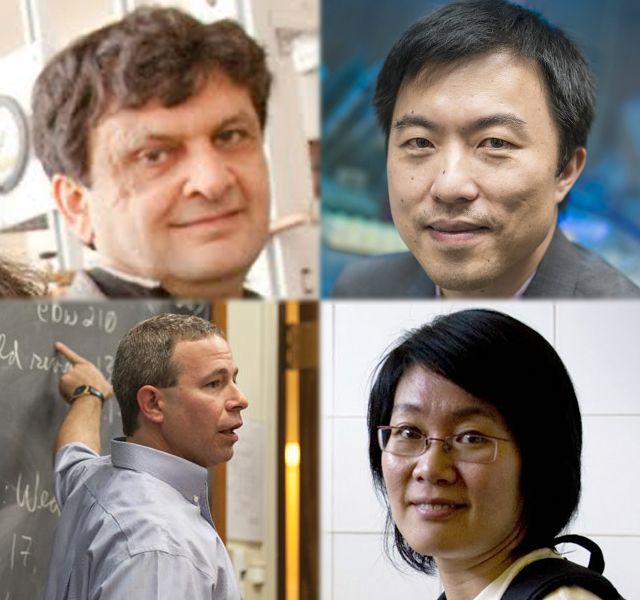Lehigh researchers bet you think this protein's about you
From shaving nicks to paper cuts to serious lacerations, every ruptured blood vessel triggers an elaborate – and vital – choreography of sensing, signaling, anchoring and clustering as the body’s cells and proteins mobilize to contain the damage.
Sorry Mom, but it isn’t Band-Aids, Neosporin, or caring hugs that stops the bleeding. Instead, a shapeshifting protein found in the bloodstream called von Willebrand Factor (vWF) is the real hero of the story.
vWF senses the abnormal flow of blood through a wound, and changes its shape from a compact, coiled globule into a significantly elongated configuration. This change reveals sites where platelets can attach to the protein, as well as sites where the protein can bind to collagen and thus anchor itself to the vessel wall near an injury site. The anchored protein then captures platelets from the blood and initiates clotting.
Although these properties are well understood, little is known about why vWF behaves as it does. A Lehigh research team comprised of Xuanhong Cheng, Alparslan Oztekin, Edmund Webb, and Xiaohui "Frank" Zhang are delving into the biomechanical properties that govern this self-healing ability. Together, they are designing an experimental and theoretical platform to investigate the mechanical properties of this complicated, multi-domain molecule.
The platform proposed by the Lehigh research team will allow researchers to predict how flow-sensitive biopolymers behave in vascular flows, and how that behavior is affected by molecular architecture and biological surface chemistry. It is also generalized enough to be able to form the basis for similar research on other multi-domain biopolymers.
“Our work in this area is unique in that we are directly coupling experiments to model development,” says Webb, associate professor of mechanical engineering and mechanics. “In turn, our simulation results directly influence our experimental interpretations.”
Frank Zhang, assistant professor in mechanical engineering and mechanics, has been seeking to unlock vWF’s mysteries for years, serving as a foundation for the current project. Xuanhong Cheng, associate professor of materials science and engineering, is an expert in developing nanomaterials and microfluidic devices that can be used to analyze intact, live bioparticles, including a point-of-care HIV diagnostic system. Alp Oztekin, professor of mechanical engineering and mechanics, brings expertise in computational fluid dynamics to the effort. Oztekin and Webb are working to develop simulations that resolve molecular scale details of the bio-protein while properly accounting for the forces due to flow -- hydrodynamic interactions that are critical to determining vWF’s response.
Overall, says Zhang, the team intends to glean information about the mechanisms by which vWF carries out its critical human body functions, and thus inspire future development of biomimetic targeted therapies.
“Beyond developing a much better understanding of vWF, we’ll also lay crucial groundwork toward biologically-inspired materials design and the development of biomimetic devices that resemble the functionality of known biopolymers,” he says. “Abnormalities in vWF adhesion are involved in the pathogenesis of many cardiovascular diseases, such as von Willebrand disease (affecting 1 to 2% of world's population), thrombosis and arteriosclerosis.”
The research is supported by the National Science Foundation, under the project “Mechano-Biologically Informed Molecular Models of Flow Sensitive Biopolymers.”
According to the team, the project will involve undergraduate and graduate students in experimental and theoretical aspects of biomolecular investigation.
“Across STEM disciplines,” says Webb, “there is an urgent need for multi-disciplinary, diverse collaborations between practitioners of experiment, computation, and theory. This project is a classic example, and we’re hoping to provide students with an immersive educational experience that will prepare them for the technological challenges that lie ahead.”
-Simona Galant '18 is a student-writer with the P.C. Rossin College of Engineering and Applied Science.

